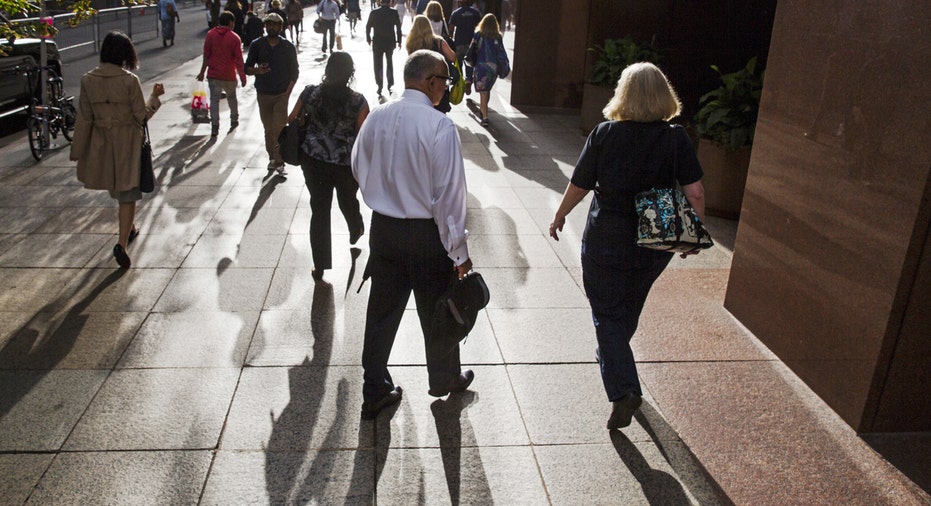July Jobs Report Proves Labor Market Still Has Gas in the Tank

The U.S. labor market in July proved it still has room to expand – quelling worries the economic bright spot was beginning to fade.
Data from the Labor Department released Friday showed the U.S. economy added 255,000 net new jobs last month, far more than the 180,000 jobs Wall Street expected. The labor force participation rate ticked up to 62.8% while the unemployment rate held steady at 4.9%.
Further, payrolls from the prior two months were revised sharply higher. In May, the economy added 24,000 jobs, a higher figure than the 11,000 jobs previously reported, while June’s gains were revised up to 292,000 from 287,000.
Employment growth in professional and business services, health care, and financial activities bolstered the overall July figure with those sectors adding a combined 131,000 jobs. Meanwhile, mining employment continued its downward trend, shedding 6,000 jobs last month. Since its peak in 2014, employment in that industry has fallen 26%.
Overall, the employment report is a reassuring, according to Bankrate senior economic analyst Mark Hamrick, who said while manufacturing continues to struggle against a lackluster global backdrop, the U.S. economy remains resilient.
"This [jobs report] gives the ability for the Fed to say, âOkay, we should raise one more time.â The question is whatâs the timing."
Indeed, data from the last quarter has shown the U.S. consumer has gained confidence, opting to spend more and save a bit less. Figures from the Commerce Department Tuesday showed consumer spending increased at a faster clip in June than had been expected as incomes rose slightly. The July non-farm payrolls report also showed average hourly earnings increased by 8 cents to $25.69 during the month, and posted a 2.6% gain on a year-over-year basis.
While some point to last Friday’s weak gross domestic product report, which showed the U.S. economy grew at a 1.2% annualized pace in the second quarter, compared to expectations for a 2.6% rate, KPMG Chief Economist Constance Hunter remarked she’s not too concerned about the stability of the overall economic picture, calling the U.S. the nicest house on the global block thanks to a more robust consumer.
“One of the striking things about second-quarter GDP was how strong personal consumption expenditures were. We saw a strong pick up in services and goods consumption. We don’t necessarily expect that to continue in goods, but services could expand more,†she explained. “When we look at the rest of GDP, the concerning thing is an overhang [in business investment].â€
When it comes to the Federal Reserve, which has been stuck in a rate-rise quandary for much of 2016 thanks in part to heightened global economic uncertainty, the July jobs report provides another solid read on the U.S. economy. Barclays economists said the report reduces near-term recession risk for the U.S. and should boost confidence among policymakers, setting the stage for a September rate hike.
Hunter pointed to the infamous so-called dot plot, a chart showing FOMC participants views of targets for the federal funds rate, for evidence a majority of policymakers would like to raise short-term rates sooner rather than later.
“We have two dots above 1% and everyone else is around 0.75%, with some at 0.50%. The majority want to raise rates again this year…this [jobs report] gives the ability for the Fed to say, ‘Okay, we should raise one more time.’ The question is what’s the timing.â€
She noted while the Fed sees little cost of waiting until December to hike rates thanks to a lack of significant inflationary pressure and a firm dollar, the central bank could move to raise rates at either its November or December meeting.
“Before Brexit, I thought it made sense for a July or September rate increase, now it makes sense to wait. I think there’s a tradeoff between the emergence of wage pressures and what’s going on in the global economy,†she explained.
Wall Street, though, still isn’t quite convinced the central bank will move rates higher by years’ end. Fed funds futures, a tool from the CME Group used to predict changes in monetary policy, show the odds of a September rate rise at 18%, while forecasts for a rate hike by years’ end stand at 46.5%, up from 32.1% on Thursday.



















